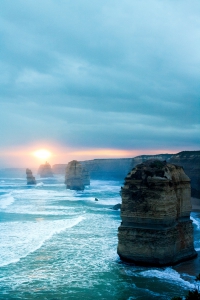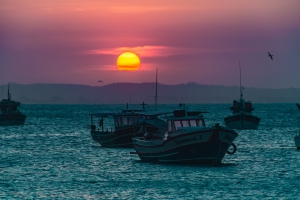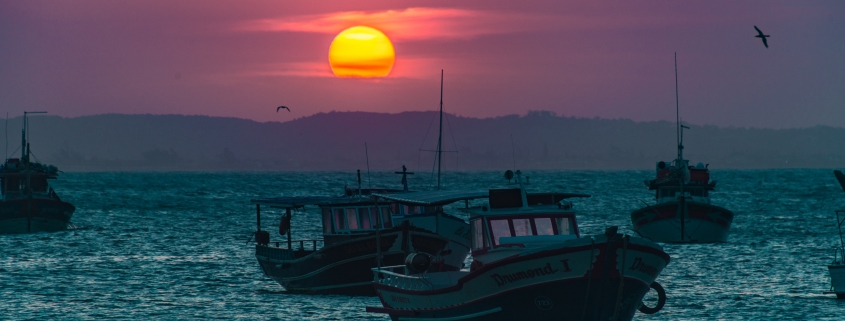How Engine Noise Can Protect Marine Protected Area
By Konnor Payne, SRC intern
Marine Protected Areas (MPAs) are internationally recognized areas of the ocean, with laws in place to protect natural or cultural resources. For instance, the Great Barrier Reef, where goals are to conserve endangered or commercially viable species, promote ecosystem health, and restore species diversity. As of 2018, there were 13,000 MPAs worldwide, contributing to approximately 6.6% of the world’s oceans (Kline et al., 2020). In theory, MPAs provide a haven for habitats of great significance, but in practice, surveying the area to ensure this is costly and resource-demanding. To ensure the laws in an MPA are upheld, either manned surface patrols or aerial patrols are required. Strong enforcement of MPA laws have been associated with a rapid increase in the numbers and density of otherwise targeted species (Kline et al., 2020). However, most methods of monitoring cannot be used every hour of every day, which leaves the MPAs susceptible to illegal fishing and pollution.

This Marine Protected Area in Australia serves as a sanctuary for the species that live there. (Riccardo Trimeloni via Unsplash.com)
In this study led by Dr. Kline, a research team proposes a cost-effective and efficient solution to protecting our MPAs. The study tests a passive acoustic monitoring (PAM) system using three acoustic recorders (Soundtrap 3000) which can detect the acoustic signatures produced by the propeller blades and engines of boats. The PAM system was installed in Australia within Cod Grounds Marine Park (CGMP) and Solitary Islands Marine Park National Zone (SIMP NPZ), chosen for their proximity to boat ramps and significant vessel usage. Illegal fishing is known to occur here, as these locations are home to snapper, pearl perch, and yellowtail kingfish (Kline et al., 2020). From July 1st to September 12th, 2018, the PAM recorded the sounds of 41 vessels within CGMP and 34 vessels within SIMP NPZ. By analyzing the acoustics picked up in the water, the researchers could give a rough generalization of the size and behavior of the vessels recorded. They could only accomplish this with strong enough acoustic signatures, which likely excluded vessels that were drowned out by biological noises.

Illegal fishing counteracts the goals of Marine Protected Areas (Tadeu Jnr via Unsplash.com)
Patrols were set to maximize vessel detection by being most active during holidays, weekends, lunar cycles, early mornings, and evenings, when infractions were most expected. However, the study found that the vessels within the CGMP in noncompliance were most active on Thursdays and Saturdays on a regular schedule between the hours of 6-11 am AEST. Within the SIMP NPZ, a similar consistent pattern was found on Thursdays between the hours of 3-6 pm AEST. These patterns indicate that people may be taking an extended weekend to capitalize on fishing from Thursday through the weekend (Kline et al., 2020). The incorporation of PAM systems in MPAs to provide the data of where and when illegal vessels are fishing coupled with manned patrols could significantly reduce the illegal activities and boost deterrence. If real-time acoustic systems could be utilized, the acoustic recorders could triangulate the location of vessels within MPA boundaries that would alert the park managers.
Works Cited
Jnr, Tadeu. Landscape Photography of Sailing Boat During Golden Hour. Unsplash.com
Kline, L. R., DeAngelis, A. I., McBride, C., Rodgers, G. G., Rowell, T. J., Smith, J., … & Van Parijs, S. M. (2020). Sleuthing with sound: Understanding vessel activity in marine protected areas using passive acoustic monitoring. Marine Policy, 120, 104138.
Trimeloni, Riccardo. Body Wave of Water Near Rocks. Unsplash.com



